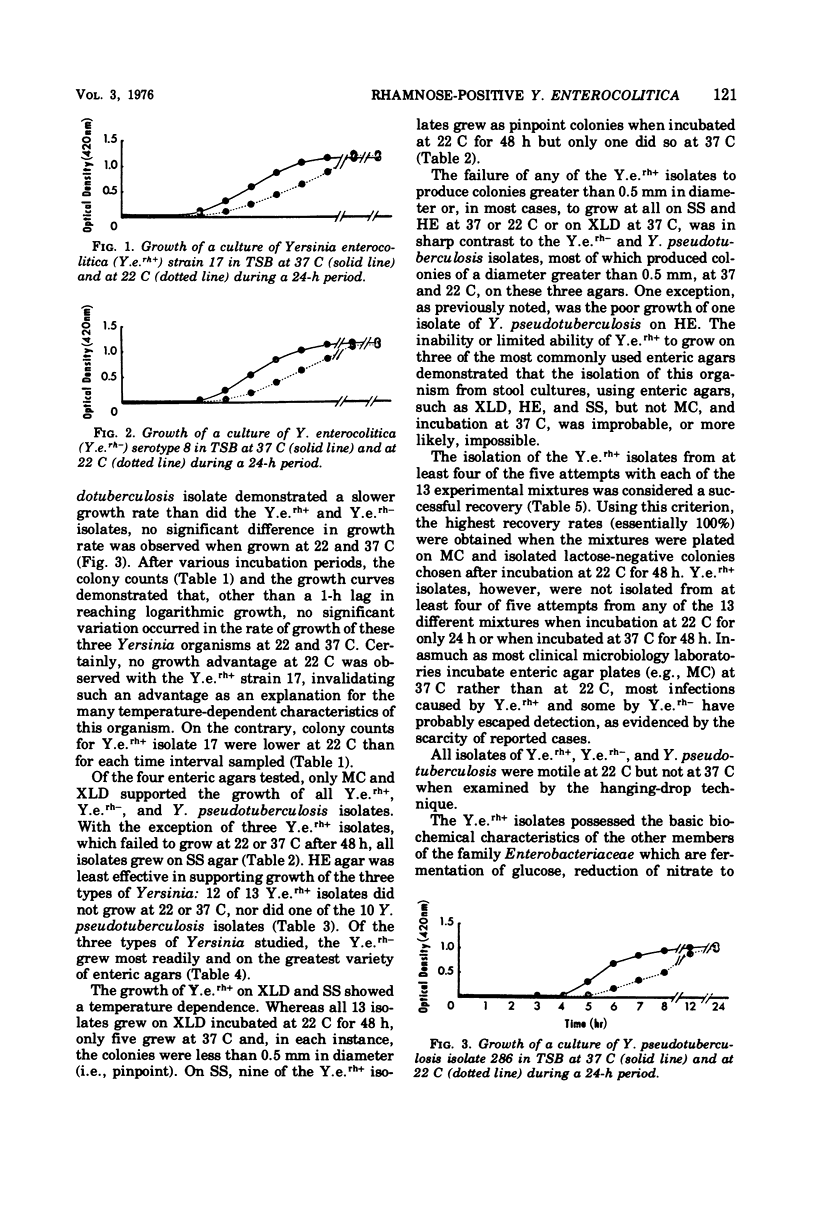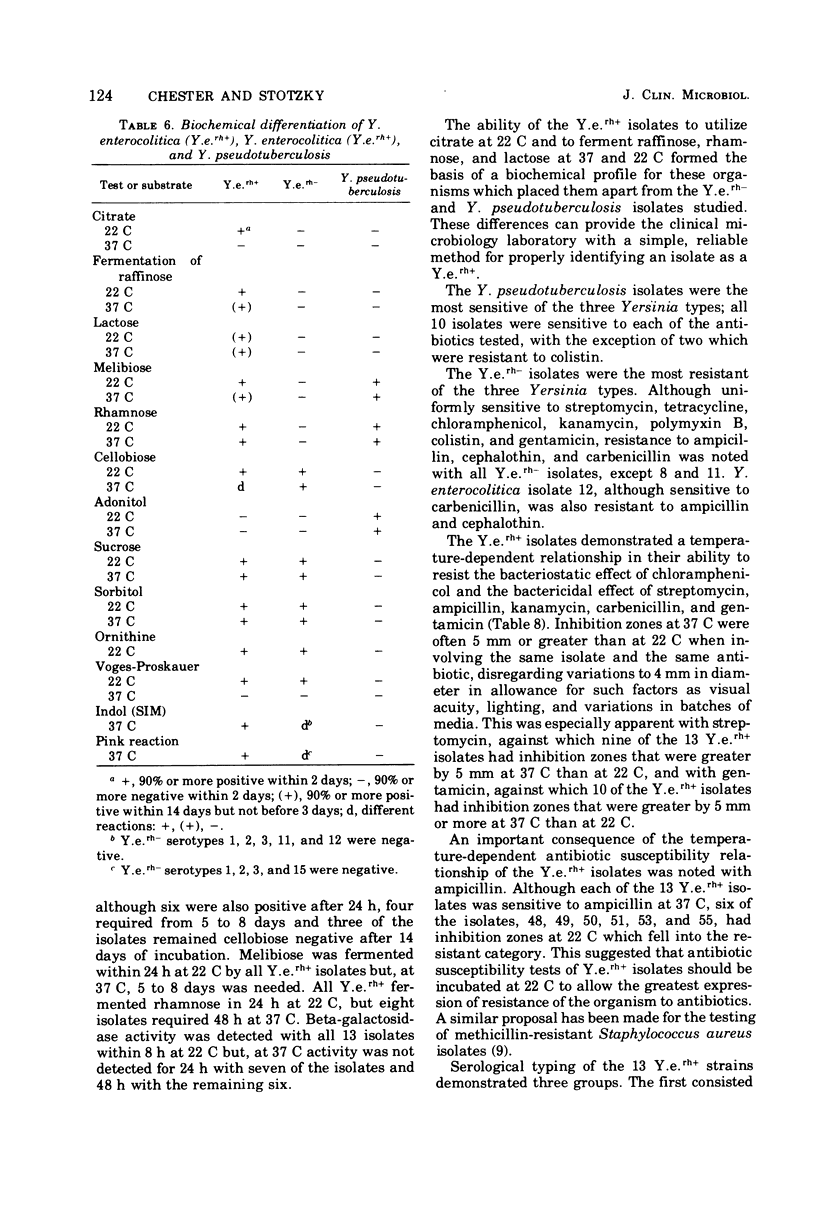Abstract
Clinical isolates of rhamnose-positive Yersinia enterocolitica (Y.e.rh+) were compared with typical rhamnose-negative Y. enterocolitica (Y.e.rh-) and with Yersinia pseudotuberculosis. The Y.e.rh+ differed from the Y.e.rh- and Y. pseudotuberculosis in their ability to ferment raffinose and lactose, utilize citrate and in their inability to grow on Hektoen enteric agar at 22 or 37 C, on Salmonella-Shigella agar at 37 C, and scant on xylose-lysine-deoxycholate agar at 37 C. An extensive temperature-dependent profile of characteristics was established for the Y.e.rh+: motility, acetoin production, citrate utilization, growth on Salmonella-Shigella agar, and ampicillin resistance occurred at 22 C but not 37 C; fermentation of melibiose, raffinose, and cellobiose occurred within 24 h at 22 C, but not before 5 days at 37 C; fermentation of rhamnose and production of beta-galactosidase occurred within 24 h at 22 C, but not before 48 h at 37 C; greater resistance to ampicillin, chloramphenicol, streptomycin, kanamycin, carbenicillin, and gentamicin was observed at 22 than 37 C; and good growth on xylose-lysine-deoxycholate agar occurred at 22 but not 37 C. For optimal recovery of Y.e.rh+ from mixed culture, e.g., stools, two MacConkey plates should be inoculated and incubated, one at 37 C, and one at 22 C. Lactose-negative colonies appearing after 48 h on the 22 C MacConkey agar but not the 37 C MacConkey agar should be considered possible Y.e.rh+. Biochemicals should be tested in duplicate, one set incubated at 22 C, one set at 37 C. Antibiotic susceptibility tests of Y.e.rh+ isolates should be incubated at both 37 C and at a lower temperature to allow the greatest expression of resistance of these organisms to the various antibiotics.
Full text
PDF








Selected References
These references are in PubMed. This may not be the complete list of references from this article.
- Ahvonen P., Rossi T. Familial occurrence of Yersinia enterocolitica infection and acute arthritis. Acta Paediatr Scand Suppl. 1970;206(Suppl):121+–121+. doi: 10.1111/j.1651-2227.1970.tb14642.x. [DOI] [PubMed] [Google Scholar]
- Aleksic S., Rohde R., Mihajlovic L. Diagnosis of infections by Yersinia enterocolitica. Bacteriology and clinial manifestations observed in nine cases of infection, Hamburg 1973. Infection. 1974;2(1):40–45. doi: 10.1007/BF01642223. [DOI] [PubMed] [Google Scholar]
- Bauer A. W., Kirby W. M., Sherris J. C., Turck M. Antibiotic susceptibility testing by a standardized single disk method. Am J Clin Pathol. 1966 Apr;45(4):493–496. [PubMed] [Google Scholar]
- Lassen J. Yersinia enterocolitica in drinking-water. Scand J Infect Dis. 1972;4(2):125–127. doi: 10.3109/inf.1972.4.issue-2.11. [DOI] [PubMed] [Google Scholar]
- Toma S. Survey on the incidence of Yersinia enterocolitica in the province of Ontario. Can J Public Health. 1973 Sep-Oct;64(5):477–487. [PubMed] [Google Scholar]
- Winblad S., Niléhn B., Sternby N. H. Yersinia enterocolitica (Pasteurella x) in human enteric infections. Br Med J. 1966 Dec 3;2(5526):1363–1366. doi: 10.1136/bmj.2.5526.1363. [DOI] [PMC free article] [PubMed] [Google Scholar]


